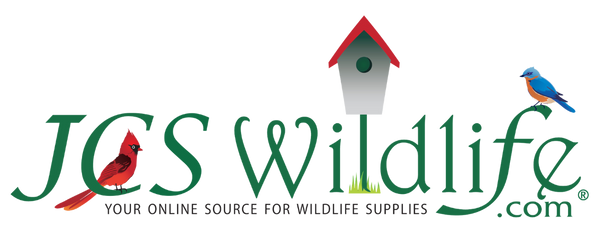If you’ve ever spotted a striking bird with a bold red cap and a zebra-striped back clinging to your backyard tree or feeder, chances are you’ve met the Red-Bellied Woodpecker. Despite its name, this bird is more famous for its red head than its belly—which leads to one of the most common questions among bird lovers: Why isn’t it called the Red-Headed Woodpecker?
In this blog, we’ll explore everything you need to know about this charismatic woodpecker—from its quirky habits to how you can attract it to your yard. Whether you're a seasoned birder or just getting started, the Red-Bellied Woodpecker is a delightful addition to any backyard wildlife haven.
1. Who Is the Red-Bellied Woodpecker?
The Red-Bellied Woodpecker (Melanerpes carolinus) is a medium-sized woodpecker native to the eastern United States. It’s known for its:
- Bright red cap (especially prominent in males)
- Black-and-white barred back
- Pale belly with a faint reddish tinge
Despite its name, the red on its belly is often hard to spot, making its name a bit of a mystery to many birdwatchers.

2. Why “Red-Bellied” and Not “Red-Headed”?
Great question! The Red-Headed Woodpecker is actually a different species altogether, with a fully crimson head and a more striking contrast in plumage. The Red-Bellied Woodpecker, on the other hand, has only a partial red cap and a subtle reddish wash on its belly, which is often hidden by feathers or hard to see from a distance.
So, while its head is more noticeable, ornithologists named it for the less obvious belly coloration to avoid confusion with its cousin.


3. Where Can You Find Them?
Red-Bellied Woodpeckers are year-round residents in much of the eastern U.S., including forests, woodlands, and suburban neighborhoods. They’re especially fond of:
- Deciduous trees
- Deadwood for nesting
- Backyards with feeders and nesting boxes

4. What Do They Eat?
These woodpeckers are omnivores, with a diet that includes:
- Insects (beetles, ants, caterpillars)
- Nuts and seeds
- Fruits and berries
- Tree sap
- Occasionally small lizards or nestlings
They’re also frequent visitors to suet feeders, especially in winter when insects are scarce.

5. How to Attract Red-Bellied Woodpeckers to Your Yard
Want to make your backyard irresistible to these birds? Here’s what to offer:
- Suet feeders: Especially in colder months.
- Peanut feeders: They love shelled or whole peanuts.
- Fruit feeders: Offer oranges, apples, or berries.
- Nesting boxes: Install woodpecker-friendly boxes near mature trees.
- Native trees: Oaks, maples, and pines are ideal for foraging and nesting.

6. Nesting and Breeding Behavior
Red-Bellied Woodpeckers are cavity nesters. They excavate holes in dead trees or limbs, often returning to the same area year after year. Key nesting facts:
- Breeding season: Late spring to early summer
- Clutch size: 4–5 eggs
- Incubation: About 12 days
- Both parents share duties of incubation and feeding

7. Vocalizations and Drumming
These birds are quite vocal, with a loud, rolling “churr” call and various other chatters and squeaks. They also drum on trees, poles, and even metal surfaces to:
- Mark territory
- Attract mates
- Communicate with other woodpeckers

8. Seasonal Behavior and Migration
Unlike some birds, Red-Bellied Woodpeckers are non-migratory. They stay in their territories year-round, adapting their diet and behavior to the seasons:
- Spring/Summer: Insect-heavy diet, nesting activity
- Fall/Winter: More reliance on nuts, seeds, and suet

9. Fun Facts About the Red-Bellied Woodpecker
- 🧠 They’re Brainy Birds: Red-Bellied Woodpeckers cache food in bark crevices and remember where they stored it.
- 👅 Tongue Like a Tape Measure: Their barbed tongues can extend up to two inches beyond their beaks to extract insects.
- 🧭 Built-In GPS: They can sense the Earth’s magnetic field to navigate their territory.
- 🎶 Metal Music Fans: They drum on metal surfaces to amplify sound and mark territory.
- 🧱 Urban Adaptability: They thrive in suburban and urban areas with trees and food sources.
- 🐜 Insect Assassins: They help control pests by eating beetles, ants, and caterpillars.
- 🪵 Woodworking Experts: They excavate nesting cavities that benefit other wildlife.
- 👫 Monogamous Mates: They form long-term pair bonds and share parenting duties.
- 🐣 Dedicated Parents: Both parents incubate eggs and feed chicks.
- 🕵️ Masters of Disguise: Their barred backs help them blend into tree bark.

10. Red-Bellied vs. Other Woodpeckers
Red-Bellied Woodpecker
Head Color: Partial red cap
Belly Color: Faint reddish wash
Range: Eastern U.S.
Size: Medium
Red-Headed Woodpecker
Head Color: Entirely red head
Belly Color: White belly
Range: Eastern U.S.
Size: Medium
Downy Woodpecker
Head Color: Small red patch (males)
Belly Color: White belly
Range: Nationwide
Size: Small
Hairy Woodpecker
Head Color: Similar to Downy but larger
Belly Color: White belly
Range: Nationwide
Size: Medium

11. Conservation Status
Good news: the Red-Bellied Woodpecker is currently listed as Least Concern by the IUCN. However, habitat loss and competition for nesting sites (especially from invasive species like European Starlings) can pose challenges.
By offering nesting boxes and maintaining native trees, you’re helping preserve their habitat and support local biodiversity.

12. Shop Woodpecker Essentials
Ready to welcome Red-Bellied Woodpeckers to your yard? Check out our top products at JCS Wildlife.com!:
- Suet feeders with tail props for woodpeckers
- Premium suet cakes and peanut blends
- Fruit and nut feeders
- Native seed mixes tailored for Eastern U.S. birds
Final Thoughts
The Red-Bellied Woodpecker is a fascinating, fun, and frequent visitor to backyards across the eastern U.S. With its bold personality, striking plumage, and year-round presence, it’s a favorite among birders of all levels.
By understanding its habits and offering the right food and shelter, you can enjoy the company of this beautiful bird while supporting local wildlife. So grab a suet feeder, hang up a nesting box, and get ready to hear that cheerful “churr” echoing through your trees!


